Brooke & Marc
Things To Do
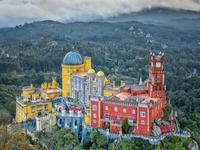
Park and National Palace of Pena
A perfect day trip to see the beautiful countryside of Portugal. A short bus ride to the train station and a train will take you the whole way to a cute little tourist town. Here there are fun restaurants and shops. There are coach buses that will take you up to the palace running open to close.

Cascais
Despite its location just outside Lisbon, the charming town seems a world away from the hustle and bustle of the country’s capital, thanks to its sun-soaked beaches, palm-fringed mosaic sidewalks and ocean viewpoints. Best of all, many tourists overlook this spot, making it a great place to get away from the crowds.
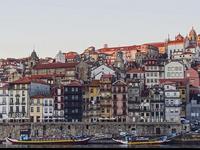
Porto
Porto is a fascinating and vibrant city that is rapidly becoming one of Western Europe’s most respected tourist destinations. The city boasts an extensive history, interesting tourist attractions, and a buzzing nightlife, and outstanding tourist facilities. There is a lot to see and do in Porto, and this diverse city will appeal to a wide range of visitors.

Drinks with a view
The parking lot on the Calçada do Combro is probably the coolest in Lisbon, not because it's free, but because you’ll find PARK on the top floor, a bar that offers a 360° view of Lisbon. After 7 flights of stairs and a ramp, PARK’s mascot, a deer, welcomes you to this suspended garden, the first of its kind in Lisbon. Sit back and enjoy the view of the 25 de Abril bridge and the Santa Catarina Church towers, accompanied by a drink and if you’re hungry, a homemade burger. Open every day from 13h00 to 02h00, PARK presents a weekly agenda chock full of music of various styles and outdoor movie screenings. So, why not park and stop by?
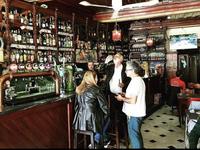
British Bar, Lda.
The British Bar was the sanctuary for spies during World War II and although ordinary now, it must have been full of intrigue and mystery.
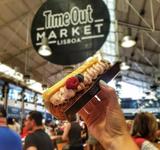
Time Out Market Lisbon
On the one hand, 26 restaurants, 8 bars, a dozen shops and a high-end music venue, all with the very best in Lisbon (the best steak, the best hamburger, the best sushi and the best live performances, amongst others); on the other hand, home to some of the city's best known (and longest-running) market vendors of meat, fish, fruit and flowers. Today, together, both sides are proud of having turned the building, its immediate surroundings and the whole Cais do Sodré neighbourhood into a huge attraction for visitors, day and night.

Praça do Comércio
The Praça do Comércio is located in the city of Lisbon, Portugal. Situated near the Tagus river, the square is still commonly known as Terreiro do Paço, because it was the location of the Paços da Ribeira until it was destroyed by the great 1755 Lisbon earthquake.
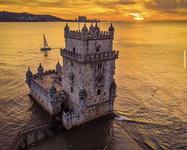
Belém Tower
Arguably the most emblematic of all Lisbon's historical monuments, the Belém Tower squats in the shallows near the mouth of the River Tagus as a symbol of Portugal's extraordinary Age of Discovery during the 16th century. Built in 1515-21 as a fortress and originally sited in the middle of the river (the watercourse has shifted over the years), the tower represents the highpoint of decorative Manueline architecture. Its ornate façade is adorned with fanciful maritime motifs - all twisted rope and armillary spheres carved out of stone.

Castelo de S. Jorge
São Jorge Castle (Castelo de São Jorge) is one of Lisbon’s most emblematic landmarks. The silhouette of the Castle stands out both by day and when illuminated at night, located on the summit of São Jorge hill, the highest in Lisbon. The hillside also houses two of the city’s neighbourhoods called Alfama and Castelo. Wild peacocks roam this magnificent castle. Hands down the most spectacular views of Lisbon and the Tagus river.

Mosteiro dos Jerónimos
A highlight of any Lisbon sightseeing tour, the 16th-century Jerónimos monastery is one of the great landmarks of Portugal, a stunning monument of immense historic and cultural significance deserving of its UNESCO World Heritage Site accolade. Near the riverfront in Lisbon's attractive Belém neighborhood, the monastery, also known as the Hieronymite convent, was commissioned by King Manuel I in 1501. Built to honor Vasco da Gama's epic 1498 voyage to India, Jerónimos is as much a symbol of the wealth of the Age of Discovery as it is a house of worship (construction was mostly funded by trade in the spices brought back by da Gama). Star features include the fantastically elaborate south portal and the beautiful and serene Manueline cloister. Vasco da Gama's tomb lies just inside the entrance to Santa Maria church.
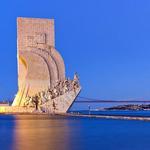
Padrão dos Descobrimentos
Dominating the Belém waterfront is the angular Monument to the Discoveries, an enormous monolith that leans over the River Tagus to resemble the prow of a caravel, the type of ship commanded by the Portuguese navigators in the 15th century to chart unexplored oceans and discover new lands.

Tram 28
The number 28 Lisbon tram connects Martim Moniz with Campo Ourique, and passes through the popular tourist districts of Graca, Alfama, Baixa and Estrela. For visitors, this is the classic Lisbon tram journey, riding in a quaint yellow tram as it screeches and rattles through the narrow streets of the city.
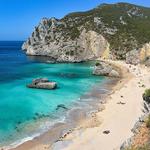
Beaches
Lisbon is surrounded by beautiful beaches. These are a few of our favorites. - Tamariz Beach - Praia da Comporta - Portinho da Arrábida - Praia do Meco

Pastéis de Belém
The world-famous pastéis de Belém - warm, creamy tarts with puff pastry made according to a secret recipe - fairly fly out of the door here. Customers with time to spare scoff them two at a time in a warren of rooms lined with tiles depicting Belém in the early 17th century. Others take them away by the half-dozen in specially designed cardboard tubes. Do not eat too many, they will also be served at our wedding.
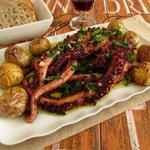
Portuguese Cuisine
A trip to Portugal would not be complete without indulging in Portuguese cuisine. While the list of restaurants we could recommend would be extensive, we are more than happy to recommend a few upon request. We however recommend, trying the following dishes: - Polvo à la Lagareiro – Traditional Portuguese Octopus Dish - Chicken Piri-Piri – Outstanding Portuguese Chicken Dish - Sardines - Bifanas – The National Portuguese Sandwich - Fresh Fish and Ceviche - Meats and Cheeses - Port-Wine
